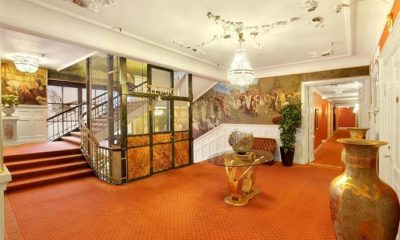Visit to Rome
How to Have the Sistine Chapel All to Yourself
- /home/discountdealsonh/public_html/wp-content/plugins/mvp-social-buttons/mvp-social-buttons.php on line 27
https://www.discountdealsonhotels.com/wp-content/uploads/2017/08/sistine-chapel.jpg&description=How to Have the Sistine Chapel All to Yourself', 'pinterestShare', 'width=750,height=350'); return false;" title="Pin This Post">
- Share
- Tweet /home/discountdealsonh/public_html/wp-content/plugins/mvp-social-buttons/mvp-social-buttons.php on line 69
https://www.discountdealsonhotels.com/wp-content/uploads/2017/08/sistine-chapel.jpg&description=How to Have the Sistine Chapel All to Yourself', 'pinterestShare', 'width=750,height=350'); return false;" title="Pin This Post">
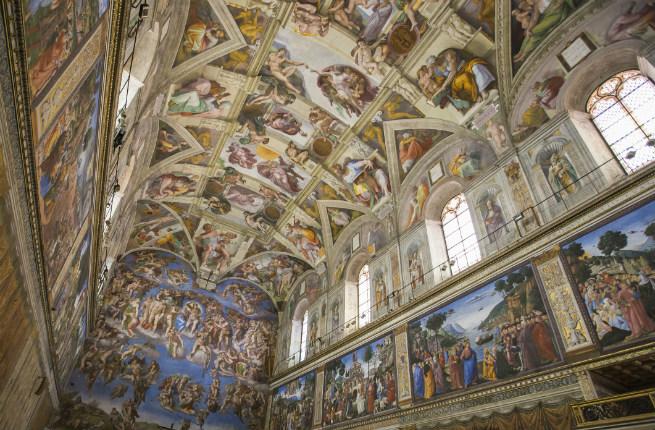
The Sistine Chapel is one of Rome’s greatest treasures—but having an enjoyable visit there is rare. Some six million visitors pass through the chapel each year to see Michelangelo’s breathtaking frescoes; at peak times of year, as many as 2,000 people are allowed inside the chapel at once. Being in the presence of so many others may cause you to have some less-than-holy thoughts about your fellow travelers; taking photographs and speaking are forbidden, though many visitors do both, as it’s impossible for a crowd of that size to be controlled. Regardless, every few minutes a guard will announce on a loudspeaker, “Atenzione, no photos, please be silent,” which momentarily quiets the throng before the hubbub starts up again. Meanwhile, with everyone staring up at the ceiling, bumping into other people is inevitable as you walk around the chapel. The experience brings to mind a chicken coop: crowded, chaotic, and noisy—hardly ideal conditions for viewing some of the finest artwork from the Renaissance.
The situation isn’t likely to improve anytime soon. Travel to Rome has increased more than 13% since 2013, the year Pope Francis was elected, according to American Express Travel. Earlier this year, His Holiness announced the Jubilee (also known as a Holy Year) of Mercy, which will take place December 8, 2015–November 20, 2016. The last Jubilee, which took place in 2000, brought 25 million pilgrims to Rome; this Holy Year is expected to attract as many as 33 million, many of whom undoubtedly will be planning to see the Sistine Chapel.
Don’t let the hordes deter you—there are several ways to improve your Sistine Chapel experience.
First of all, you should never wait in the public line to enter the Vatican Museums, where the chapel is located; by booking tickets on the official website, you are allowed to skip the line, which can have a wait time of up to three hours. If you don’t book tickets in advance, you’ll find the shortest lines between 12pm and 2pm, or during a Papal Mass. Even when lines to enter are short or nonexistent, however, you’ll still find a sizeable crowd inside the Sistine Chapel.
A second option is to book entry through a tour company, which will also allow you to skip the public line, use the dedicated tour-group entrance, and enter the Vatican Museums an hour before the general public is admitted at 9am. However, it’s important to note that more than 200 operators share this entrance, so unless you’re first in line, it’s possible that you will still have to wait for up to an hour depending on the time of day.
For a truly unforgettable experience, there is a third option, and this one is the best. There are only three companies designated as official Vatican Museums partners, and these operators are allowed to enter twenty minutes before non-partner tour groups, which is also 80 minutes before the general public enters the museums. One of the official partners is an Italian bus-tour operator, another is a luxury company that plans every aspect of your trip—neither of which is a feasible option if you aren’t visiting multiple cities in Italy or you don’t want to pay a high price tag.
The third operator, City Wonders, is perfect if you’re planning your own trip to Rome and don’t want to commit to anything more than early access to the chapel. (Founded in 2004, City Wonders is a well-respected tour operator with dozens of offerings in Rome and Vatican City, and many more in other parts of Italy as well as London and Paris.) Their Sistine Chapel Express tour (from $54.64 for adults, $49.06 for children) allows its small group of up to twenty people to be among the first to enter the Sistine Chapel when it opens around 8 am.
On a recent Saturday morning, I experienced this tour myself. We met at 7:30am outside the entrance and put on audio headsets that allowed our guide to speak to us through a microphone rather than shouting. By 7:40, my group (less than ten people) went through security and was the first to enter the museums. We took a shortcut and swiftly made our way to the entrance of the Sistine Chapel, dumbstruck by the fact that we were the only people wandering through the gorgeous halls and galleries. Shortly after 8am, we were permitted to enter, and as I walked into the completely empty chapel, there weren’t even guards present yet.

Words can’t fully express the sense of wonder I felt. Only the day before, I’d made an afternoon visit to the chapel and found the crowds and noise so miserable that I could barely enjoy Michelangelo’s masterpieces. Now, in the company of just a handful of others, the complete silence allowed me to fully appreciate the majesty of the space and the artwork. Even when other groups started to trickle in, the experience wasn’t altered—it turned out that everyone who’d spent money and woken up early to beat the crowds was respectful of the chapel and its rules. It felt strange knowing that, perhaps only an hour later, the room would be crowded with tourists trying to secretly take selfies.
The guide may quietly discuss the history of the Sistine Chapel via the headsets, but I’d recommend reading up in advance and taking the headphones out so you can enjoy the silence. The Sistine Chapel Express tour does not include a guided tour of the rest of the Vatican Museums, but once you are finished in the chapel—and you are welcome to stay as long as you like—you’re free to independently explore everything else, which can easily fill the majority of a day. Considering that general admission to the Vatican Museums costs 16 euros (currently $17.90), which means the premium you pay for early access to the chapel is just over $36. That’s not peanuts, but it’s a small price to pay for experiencing one of the most beautiful man-made spaces in the world, essentially, by yourself.
Visit to Rome
Rome’s 10 Best Bars for a Classic Italian Aperitivo
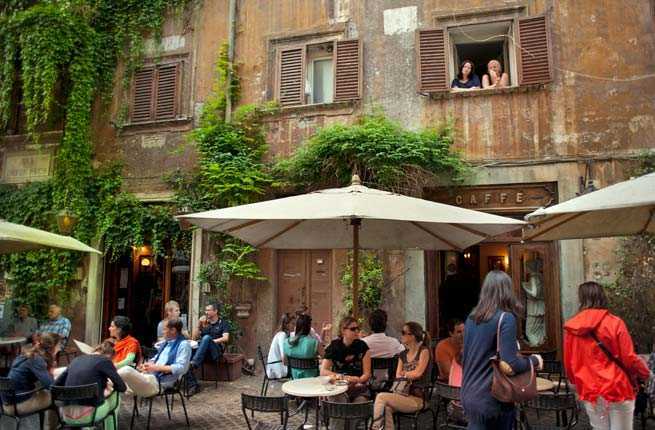
Italians and visitors alike love happy hour, known in Italy as l’aperitivo. After work, friends and colleagues often meet for a drink and a tapas-style snack before dinner. In Rome, the tradition is especially strong, and many cafés and bars include snacks in the price of a drink. The classic Roman aperitivo is a spritz, made of white wine or Prosecco, Campari or Aperol (bartenders often ask which you prefer), and sparkling water. If that’s not your drink of choice, many bars serve a full cocktail menu, and you can find a glass of wine everywhere. Whatever you prefer, you’ll find it at one of these 10 Roman bars, which all serve an excellent aperitivo.
by Laura Itzkowitz
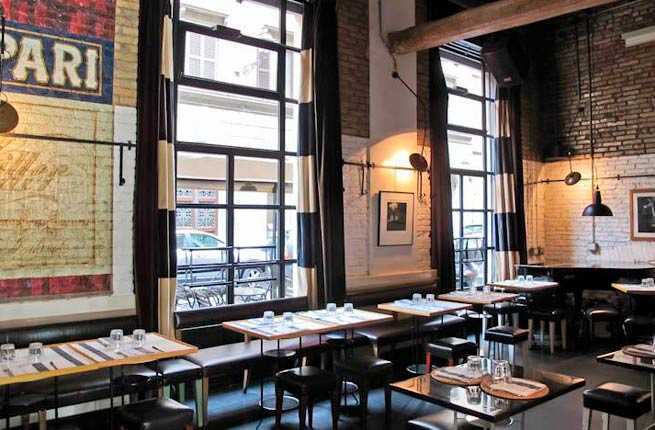
‘GUSTO
Hands down, ‘Gusto serves the best aperitivo buffet in Rome. Every evening of the week, the wine bar sets out a full spread of small bites, including Sicilian-style arancini, mini-sandwiches, salads, little squares of pizza, and pizzette—savory phyllo dough pastries with a dab of tomato sauce. For 10€, chose one of the excellent cocktails and head to the unlimited buffet. ‘Gusto has an extensive wine list as well, and the friendly bartenders will be happy to help you make a selection.
Insider Tip: If ‘Gusto’s wine bar is too crowded, head next door to the Formaggeria, which has a great selection of cheeses and small bites. ‘Gusto also serves an excellent buffet brunch on the weekends.

ANTICO CAFFE DELLA PACE
The Caffè della Pace is about as close as you can get to living in La Dolce Vita. Tucked away behind Piazza Navona, this popular spot is favored by Robert De Niro, Al Pacino, and Francis Ford Coppola, who gather there when they’re in Rome. It’s been around since the 1880s, and the mahogany interior, marble tables, sculpted nymphs, and antique cash register certainly enhance its Old World charm. In the warmer months, the terrace is packed, so don’t be surprised if there’s a wait. But it’s worth it for the drinks, the atmosphere, and the people-watching.
Insider Tip: If you’re in the mood for something sweet, order the Fragolino, a sparking Italian wine that tastes like strawberries.

FRENI E FRIZIONI
Trastevere, Rome’s hip, artsy neighborhood, is always buzzing, and Freni e Frizioni is no exception. In the warmer months, crowds spill out onto the terrace overlooking the Tiber and Piazza Trilussa. The bartenders here are expert mixologists—tell them what flavors you like and they’ll create a cocktail for you using fresh fruit and a combination of liquors. They also set up a great aperitivo buffet in the back, if you can navigate the people milling about.
Insider Tip: If you’re still hungry after aperitivo, there are plenty of great restaurants nearby, like Trattoria degli Amici, which serves traditional Roman cuisine and is dedicated to helping the mentally disabled.
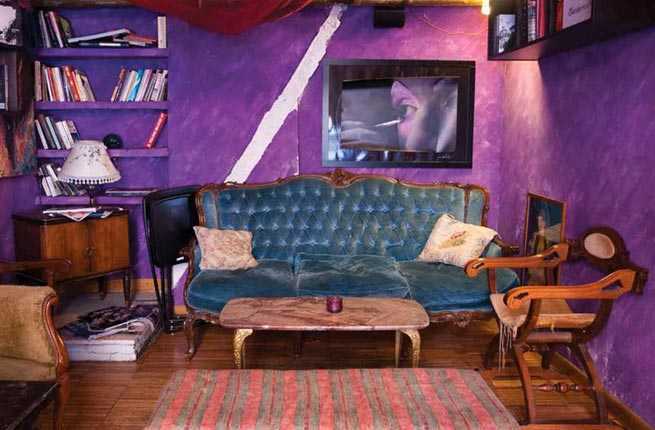
LIBRERIA CAFFE BOHEMIEN
Perched on one of Monti’s quieter streets is the cozy Caffè Bohemien, sometimes known as Libreria. This little place is full of vintage furniture and books, and is a mainstay in the charming bohemian neighborhood near the Coliseum. The friendly owners will be happy to serve you some snacks along with your wine. The vibe here is relaxed and welcoming. Every now and then, they host book readings.
Insider Tip: The bar is closed on Wednesdays, but there are plenty of other great spots in Monti.
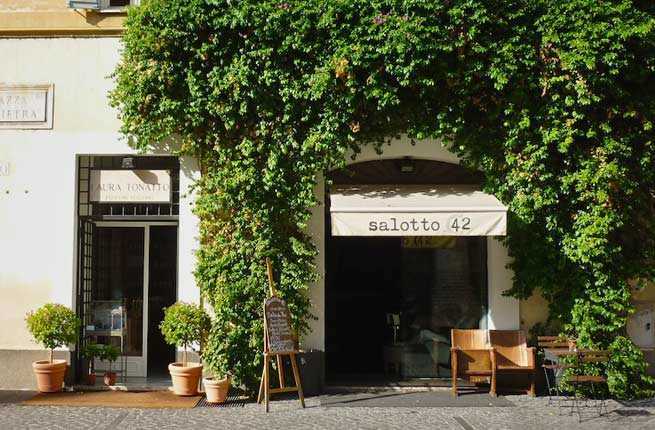
SALOTTO 42
Located on the Piazza di Pietra just steps away from the Pantheon, Salotto 42 is a modern, Swedish-inspired bar and lounge. The décor is carefully curated, down to the art magazines scattered around for guests to browse. Salotto means “living room” in Italian, and this spot is intended to make people feel at home. Grab a cocktail, fill up a plate with snacks, and find yourself a seat on one of the little sofas. If you stay long enough, the music will pick up as the vibe becomes more energized.
Insider Tip: If you want to fit in here, you might want to dress up: This trendy spot is owned by a Swedish model.

FLUID
If you peer in the windows of Fluid when passing by, you might think people are sitting on giant blocks of ice, but that’s just part of the décor, which tends toward the ultra-modern. Fluid’s sleek interior goes well with its great cocktail selection and aperitivo buffet. It’s one of the few places in Rome that serves Brazilian food, like fried plantains.
Insider Tip: When the DJ starts spinning tunes, people like to party here.

L’ENOTECA ANTICA DI VIA DELLA CROCE
One of the best wine bars in Rome, L’Enoteca Antica purveys a superb wine selection and the bartenders will be happy to give you a recommendation. Locals and foreigners mingle at the half-moon bar and the atmosphere is very inviting. Bartenders will carve you a hunk of cheese right off a giant wheel of Parmeggiano, along with prosciutto and marinated artichokes, olives, and other veggies. The enoteca has tables with waiter service and a full menu in the back, but the best people-watching is at the bar or at one of the tables on the street.
Insider Tip: Try a glass of the Brunello di Montalcino—it’s the best.
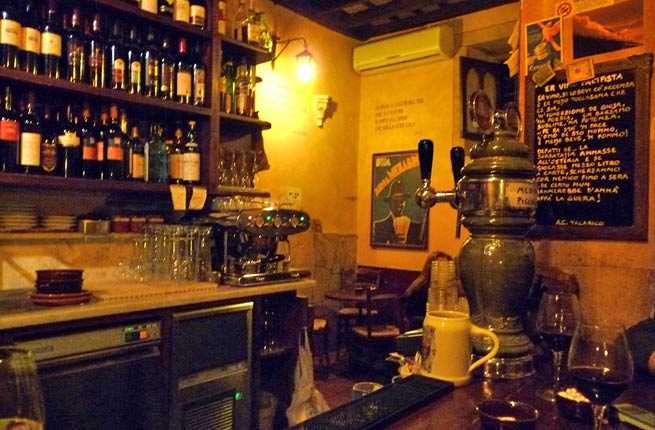
AI TRE SCALINI
This rustic wine bar is perched on Via Panisperna, a steeply sloping cobblestone street in Monti, where ivy and twinkling lights mingle, creating a very romantic atmosphere. In the evening, friends and lovers flock to Ai Tre Scalini to share a liter of the house wine and antipasti. Inside, quotes by Dante and other Italian writers are painted on the yellow walls. This place fills up after dinner, with people spilling out onto the street, drinking and talking the night away.
Insider Tip: Check the chalkboard to see which wines are available. When in doubt, order the house wine.
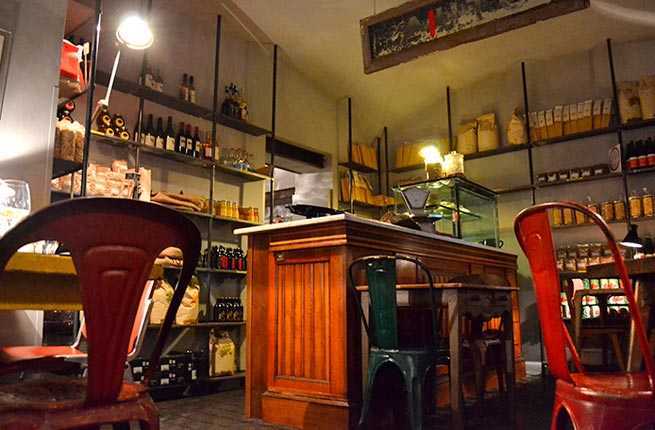
URBANA 47
Urbana 47 on Via Urbana looks like a restaurant you might stumble upon in Brooklyn. It’s an eclectic spot, with modern décor in an ancient space. The menu is eclectic too, with both Roman specialties and more exotic dishes (for Rome, anyway) like vegetable tempura, couscous with vegetables and curry sauce, and beef kabobs with BBQ sauce.
Insider Tip: Urbana 47 is great for foodies, and they have a tasty lunch and dinner menu, too. It’s also one of the few places in Rome where you can get a full American breakfast.
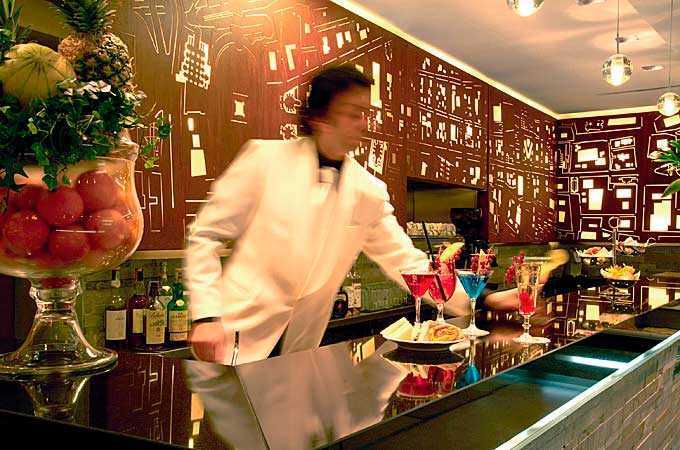
BAR CANOVA
Along with Rosati, Bar Canova is one of two famous bars on Piazza del Popolo. Though both are well respected and are perfectly positioned for people-watching, Canova is the more down-to-earth of the two. It was Federico Fellini’s favorite bar—in fact, he kept an office in the back, for when he wanted to meet people privately. To this day, Canova displays his drawings and photographs with the stars of his movies in the hall. In addition to aperitivo, Canova serves coffee any time of day, plus sandwiches and pastries. The best part: Despite the location, Canova is very reasonably priced.
Insider Tip: If you’re coming to see the Fellini memorabilia, head around the corner afterward to see his apartment on Via Margutta.
Visit to Rome
10 Under-the-Radar Museums in Rome
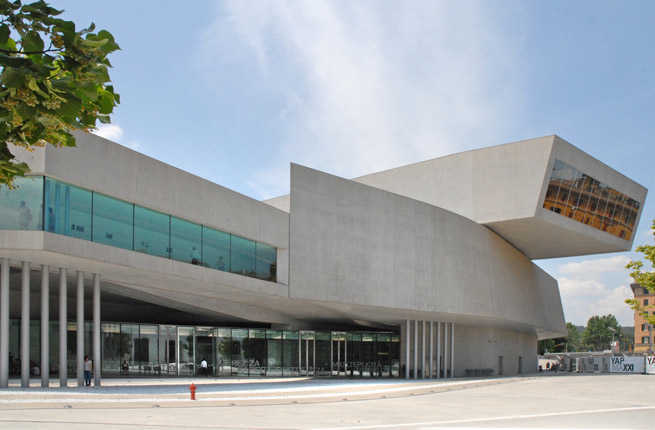
Attribution-NonCommercial-ShareAlike License
Rome has such an overwhelming amount of ancient and baroque art that it can be easy to forget about the city’s wide variety of museums. Of course, no trip to the Eternal City would be complete without a visit to the Vatican Museums and the Capitoline Museums, but besides those, Rome has plenty of excellent cultural institutions that often go overlooked. From the world’s most impressive collection of Etruscan art to contemporary works housed in one of architect Zaha Hadid’s modern masterpieces, here are 10 lesser-known museums that contain some surprising finds in Rome.
by Laura Itzkowitz
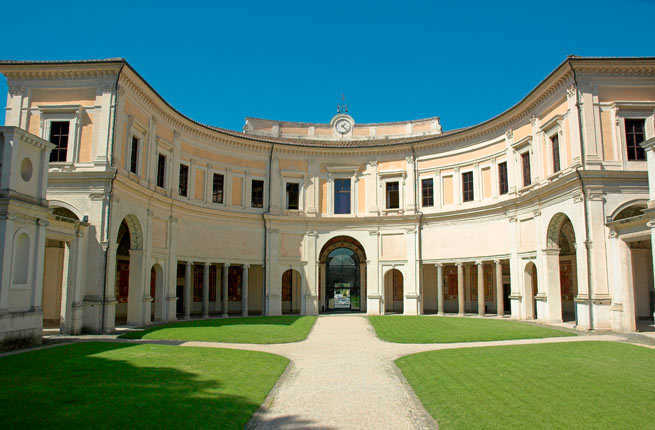
MUSEO NAZIONALE ETRUSCO DI VILLA GIULIA
Villa Borghese
Little attention is paid to Etruscan art in Rome, except at the Museo Nazionale Etrusco di Villa Giulia (the National Etruscan Museum of Villa Julia), where it takes center stage. The Etruscans were an ancient civilization that settled in Tuscany, Umbria and the area surrounding Rome, and they had a great influence on ancient Roman culture. The museum is worth a visit for its collection—the world’s best collection of Etruscan art and artifacts—and its architecture (though that came much later). Villa Giulia was built around 1551 for Pope Julius III, with help from Michelangelo and Vasari.
Insider Tip: If the weather is nice, go for a stroll in the lovely Villa Borghese park near the museum. To see ancient Etruscan ruins, you’ll have to take a day trip to Tarquinia or Cerveteri.
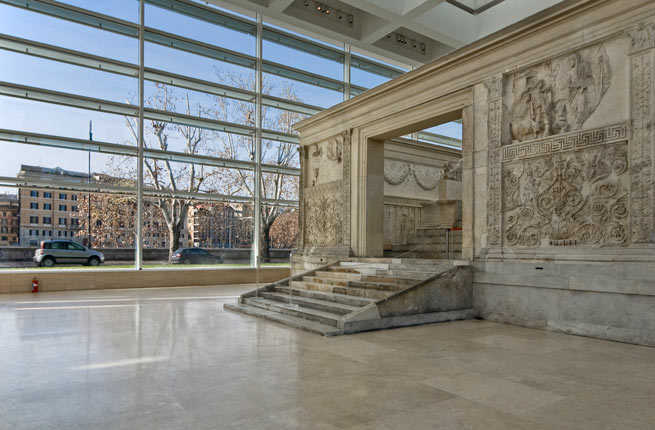
ARA PACIS AUGUSTAE
Corso and Spagna
Augustus’s altar of peace is a marvel to behold, decorated with delicate carvings and friezes depicting the imperial family and myths associated with Rome’s founding. The Roman Senate commissioned it in 13 B.C. to celebrate the Pax Romana, an era of peace brought on by the Emperor Augustus’s successful military campaigns. The ancient altar—lost for over a 1,000 years and rediscovered, piece by piece—is now housed inside Richard Meier’s modern architectural masterpiece, built using Roman travertine and glass. The result is a striking juxtaposition of ancient and modern. In addition to housing the altar, the museum hosts temporary exhibits downstairs.
Insider Tip: After a visit to the Ara Pacis, head over to ‘Gusto, one of the best bars in Rome for a classic Italian aperitivo.
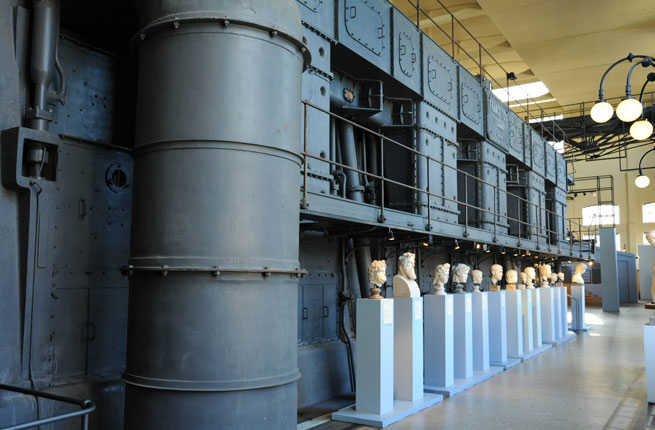
CENTRALE MONTEMARTINI
Aventino
The mix of old and new is particularly apparent at the Centrale Montemartini, an art museum housed in a former power plant. Abandoned in the 1980s, the plant was first used as a temporary exhibition space while the Campidoglio was undergoing renovation. It received such acclaim that it was integrated into Rome’s municipal museum system. The ancient sculptures and mosaics are displayed against a backdrop of industrial machinery, and are part of the Capitoline Museums‘ collection. Unlike the main museum, the Centrale Montemartini rarely has crowds of tourists or lines to get in.
Insider Tip: For a nice stroll, walk up Via Ostiense to see the Piramide di Caio Cestio and the Non-Catholic Cemetery, where Keats and Shelley are buried.
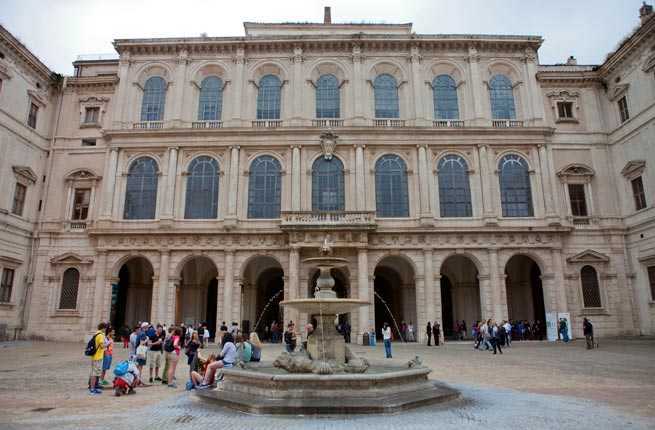
PALAZZO BARBERINI
Quirinale
Stroll down Via Barberini and you’ll immediately be struck by the beauty of the Palazzo Barberini, built in the 1600s as a mansion for the powerful Barberini family. The Palazzo Barberini is part of the family of museums that includes the more famous Galleria Borghese, as well as the Museo Nazionale del Palazzo di Venezia, the Castel Sant’Angelo, and several others. They’re all excellent, but only the Palazzo Barberini contains Raphael’s La Fornarina—modeled on his lover, a baker’s daughter—and Caravaggio’s Judith and Holofernes.
Insider Tip: Don’t forget to look up or you’ll miss baroque painter Pietro da Cortona’s incredible ceiling painting depicting Urban VIII as an agent of Divine Providence, surrounded by giant bees, the symbol of the Barberinis.
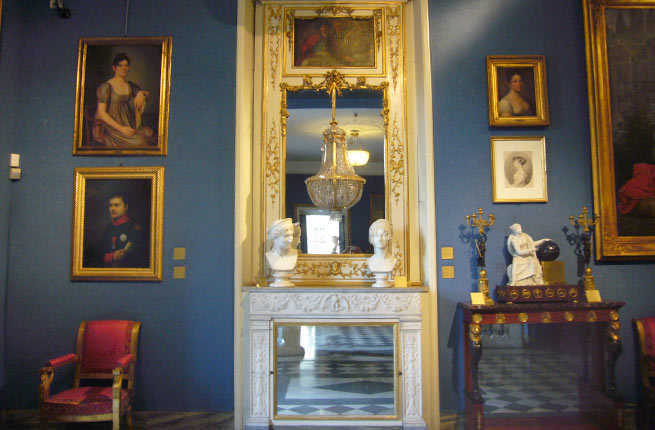
MUSEO NAPOLEONICO
Navona
Walking into the opulent Museo Napoleonico near Piazza Navona, you might feel you’re in Paris rather than Rome. In fact, the entire city could have been more like Paris if Napoleon had succeeded in his conquest of Italy. He seized Rome in 1808, kidnapped the pope, and declared his son the King of Rome. Though his empire fell, visitors today can see Napoleon memorabilia inside his museum, including a bust of his sister by sculptor Antonio Canova. (Canova’s sculpture of Pauline Borghese as Victorious Venus is in the Galleria Borghese.) The Museo Napoleonico is located in the Palazzo Primoli, which also contains the Museo Mario Praz upstairs.
Insider Tip: For coffee or a drink, head over to the nearby Caffè della Pace, included in our list of Rome’s best bars for a classic Italian aperitivo.
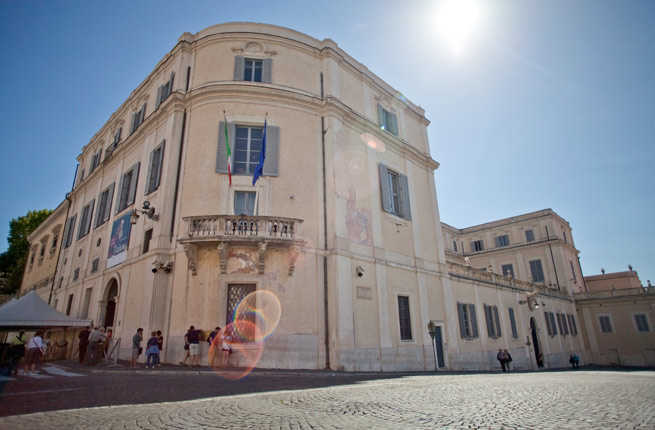
SCUDERIE DEL QUIRINALE
Quirinale
It’s hard to believe that this glorious exhibition space opposite the Palazzo del Quirinale, which houses the President of the Republic, once housed horses. Built on the highest of Rome’s seven hills, the Palazzo del Quirinale dates back to 1583 as a papal summer residence, and the stables were added between 1722-1732. Needless to say, the views from the Quirinale are fantastic, and a recent renovation of the Scuderie restored the great window by Gae Aulenti. The space hosts important temporary exhibitions, including an incredible Caravaggio retrospective in 2010. A major exhibition of Frida Khalo’s work is currently on view.
Insider Tip: A few blocks away stands one of Rome’s most important works of baroque sculpture—Bernini’s awe-inspiring Ecstasy of Saint Theresa inside the Church of Santa Maria della Vittoria.
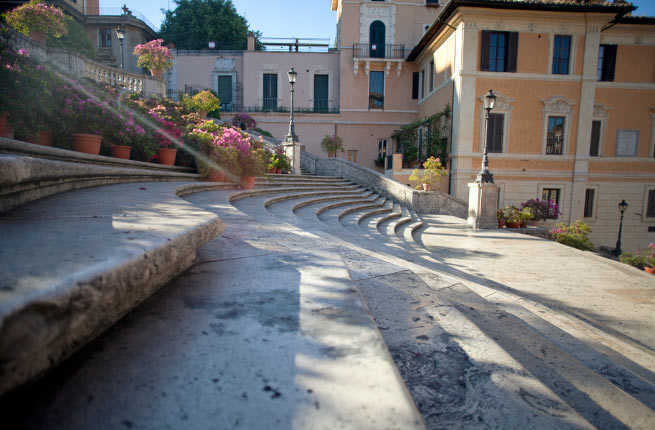
KEATS-SHELLEY MEMORIAL HOUSE
Spagna
Nestled at the foot of the Spanish Steps, the Keats-Shelley Memorial House preserves the apartment where John Keats took his last breath. The museum is dedicated to his memory and that of the English Romantic poets, especially Shelley and Byron. Keats died at age 25 of tuberculosis, and the authorities burned his furniture as a sanitary precaution. The museum, however, displays his original fireplace and ceiling decorated with floral motifs, as well as his letters and many artifacts from the period. It’s a peaceful spot amid the bustle of the Spanish Steps, just as Keats would have wanted it.
Insider Tip: For a coffee or an aperitivo, head to the nearby Enoteca Antica di Via della Croce or the famous Antico Caffe Greco, which Keats and Byron frequented.
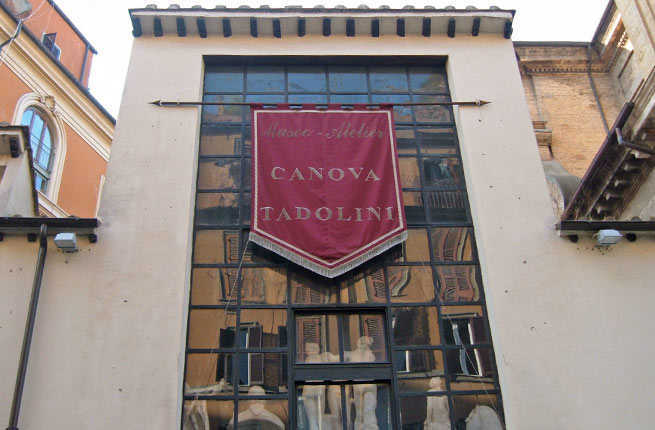
MUSEO-ATELIER CANOVA TADOLINI
Spagna
The Museo-Atelier Canova Tadolini was once the studio of Antonio Canova, one of Europe’s greatest neoclassical sculptors, and his disciple Adamo Tadolini. The main floor has the largest and most impressive sculptures, as well as the café. Upstairs, there are some more intimate and formal dining rooms, perfect for a romantic dinner. Scattered throughout, you can see the sculptors’ tools. A proper meal here isn’t cheap, but it’s worth it to dine surrounded by the profusion of majestic marble sculptures and plaster casts.
Insider Tip: Canova’s sculptures are scattered all over the world, but you can see his Principessa Pauline Borghese (Napoleon’s sister) as Victorious Venus at the Galleria Borghese and Perseus with the Head of Medusa at the Vatican Museums.
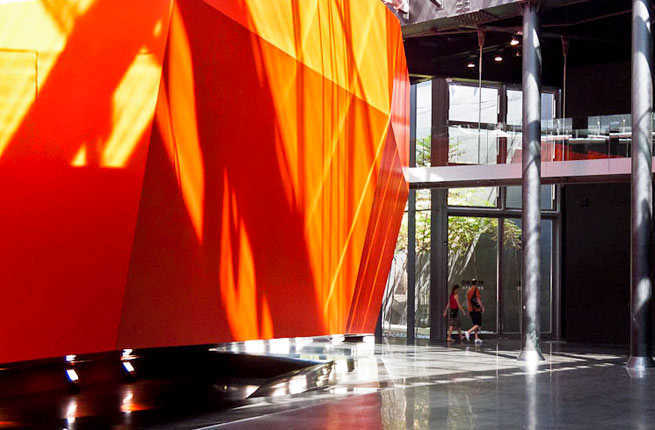
MACRO
Repubblica
MACRO—Museo d’arte contemporanea Roma—is one of two major museums dedicated to contemporary art. Here, in the former Peroni beer brewery, living Italian artists get their due. French archictect Odile Decq designed the museum, with its giant red cuboid in the center and its large rooftop terrace that acts as both gathering space and exhibition space. MACRO’s sister site, MACRO Testaccio, is housed in a former slaughterhouse in a neighborhood now known for its bohemian atmosphere and many nightclubs.
Insider Tip: MACRO is a bit far from the subway, but is easily reachable by tram or bus.
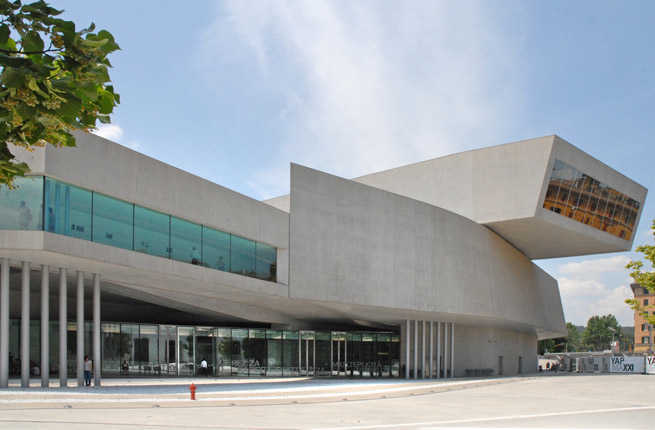
Attribution-NonCommercial-ShareAlike License
MAXXI
Piazza del Popolo
Rome’s other major contemporary art museum is the MAXXI—Museo Nazionale delle arti del XXI secolo (National Museum of 21st century arts). Designed by Zaha Hadid, its name suggests the maximum, and visitors will feel that its monumental architecture fulfills that expectation. Hadid’s monochromatic building blurs the lines between interior and exterior with an abundance of natural light, large open spaces, and long, curving staircases. Since its opening in 2010, the museum has shown work by some of the world’s most important contemporary artists and architects, including Anish Kapoor, Joseph Beuys, Jan Fabre, Le Corbusier, and Carlo Scarpa.
Insider Tip: MAXXI is located near the Olympic Stadium, just outside the historic center, and is easily accessible by tram from Piazza del Popolo. Nearby, the Ponte Milvio area has lots of bars and restaurants favored by locals.
Visit to Rome
7 Unique Tours of Rome
Just because all roads lead to Rome doesn’t mean they converge into a single route once they get there. When in Rome, forgo the well-trodden tourist path altogether in favor of some offbeat adventuring, courtesy of these seven unique tours, each guaranteed to show you a different side of this ancient city. Plus, all of these distinctive options offers a welcome reprieve from walking by putting your sightseeing on wheels. So go ahead and see Rome in one-of-a-kind style—your (modern-day) chariot awaits.
Slide Behind the Wheel of a Vintage Fiat 500

Italian auto designers gave the world top-notch supercars with Ferrari, Lamborghini, and Alfa Romeo, but the feel-good Fiat 500 does its part to capture the hearts and imaginations of the masses. Get behind the wheel of this happy little car—or be chauffeured, if you prefer—courtesy of ROME 500 EXP, which operates a fleet of six of the vintage vehicles within Rome proper. Choose your favorite classic ’60s or ’70s model, pop open the sunroof, and head out on a guided convoy-style tour featuring piped-in commentary from the tour leader as you circuit Rome, incorporating short stops at key sights. Several tour variations are possible, but we like the four-hour option that wraps up with a wine-and-food pairing at a sophisticated wine bar, set just steps from the Colosseum. $200/person, two-passenger minimum; for self-drive tours, note vehicles are manual and an international license is required
Pedal Past History on the Ancient Appian Way

Travel paths once paved for chariots as you weave past ancient Roman statues, tombs, and aqueducts, and alongside the ruins of a circus and imperial palace. Some 2,300 years since this commercial route was first built, the transporting Appian Way still beckons travelers. The pros at TopBike lead guided, six-hour, 18.5-mile-long bike tours here that are suitable for intermediate riders, following mostly flat terrain (though some is off-road), and offering plenty of breaks for commentary and rest. Tours also include a guided visit of the fascinating Christian burial site, the Catacombs of San Callisto, as well as a stop for cheese and wine at a local sheep farm. $108/person
Cruise the City by Night on a Vintage Vespa
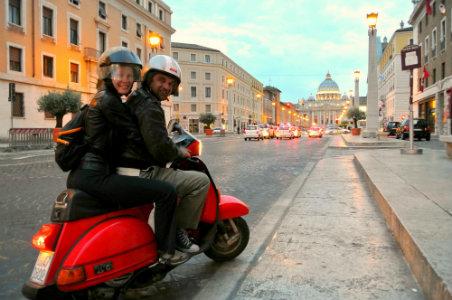
See Rome in a new light, by night, with ageless monuments set softly aglow as you navigate the chaotic whirl of Roman traffic, traversing narrow alleyways and sweeping squares on the back of a vintage Vespa. Nerone Tours Italy offers the ultimate cinematic tour of the Eternal City— à la Audrey Hepburn and Gregory Peck in Roman Holiday—via Vespa (or Lambretta) scooters. Drivers stand in as informal guides, though you’ll only half-catch their commentary as the wind sweeps through your hair and as each twist and turn reveals a dramatically lit facade vying for your attention. Three-hour nighttime tours kick off from your hotel around dusk (at 8 p.m.), and can be customized based on guests’ interests, or left up to the drivers for some broad-stroke highlights; if the thrill of the ride isn’t enough to keep your adrenaline up, a coffee stop is also included. $218/person
Set Out on Segway to the Hidden Hill of Trastevere

Segways are just plain fun, and this modern mode of transport makes for an interesting juxtaposition while exploring Roman antiquity. Make the run with Rex Tours, who rank top for their pleasant, insightful guides; thorough coaching on operating the Segways; and diverse tour options. We especially like their 3.5-hour, small group Trastevere tour, which rolls through this charming historic hilltop neighborhood, where lost-in-time alleyways, flanked by medieval architecture, lead to impressive, less-trodden points of interest and panoramic vistas over Rome. $108/person
Whiz About Town in an Electric Car

The nifty electric, two-seater cars of Buzz4Tours, packaged as “personal commuters,” are compact enough to skirt traffic and to park just about anywhere (bonus: parking for electric cars in Rome is free). Sign up for caravan-style, four-hour tours for a discovery of Rome’s must-sees—you’ll follow a lead car, helmed by a professional guide, who offers up commentary via walkie-talkie transmission. Or, you can opt in for an independent half- or full-day circuit, swapping out the tour guide for an iPad that comes preloaded with GPS-led itineraries, Internet access, and Skype. $89/person for guided tours; an international license is required
Get Your Groove on in a Historic Tram

Pair ancient sites with classic tunes on this one-of-a-kind tour of Roma. Dreamt up by an American expat musician and his Roman girlfriend, these lively evening tours transform one of Rome’s few remaining historic street trams into a mobile, music-themed party fueled by free-flowing Italian wine and aperitivo-style small plates. A live band turns out a mix of classic rock (à la the Beatles and Elvis), Italian favorites (like Antonello Venditti and Lucio Battisti), and Italian-American legends (Sinatra, Dean Martin), while the backdrop of Roman monuments flashes by (commentary is provided), including a pit stop at the Colosseum for an atmospheric alfresco dance party. Tram Tracks run most Monday nights, and last 90 minutes. $55/person
Zoom on a Golf Cart for Family Fun
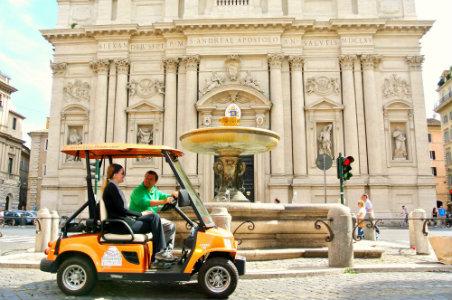
Hop aboard an electric golf cart for some guaranteed family fun. Especially well-suited for kids, seniors, and the mobility impaired, these easy-breezy tours were designed by the Irish expat owner of Angel Tours, who was seeking a comfortable way of showing his elderly out-of-town mom the sights. It was a hit with mom, and customers soon agreed. Plus, the carts are eco-friendly and can be driven and parked almost anywhere, for four hours of chauffeured hop-on, hop-off access to the major sites, including the Pantheon, St. Peter’s Square, and more, along with a break for ice cream or coffee. $109/adults; reduced rates for kids (under 6 are free); an international driving permit is required for driving
Elissa Richard is a contributor to numerous American travel publications, including Fodor’s, Condé Nast Traveler, Travel + Leisure, Yahoo, and more. Based in Brooklyn, NY, she has traveled to and reported on some 55 countries and 20 cruise lines around the globe, and has resided in Argentina, France, England, Denmark, and the Netherlands. Follow her @TravelSpiritNYC.
-
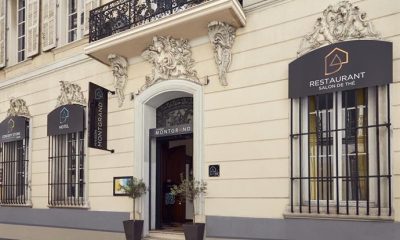
 France6 years ago
France6 years agoHotel Maison Montgrand – Vieux Port
-

 United Kingdom6 years ago
United Kingdom6 years agoBritannia International Hotel Canary Wharf
-
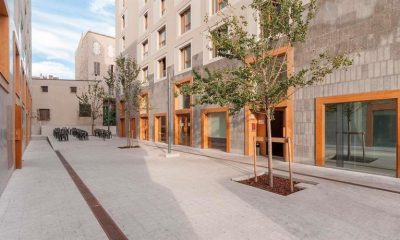
 France6 years ago
France6 years agoAppart’City Marseille Euromed
-
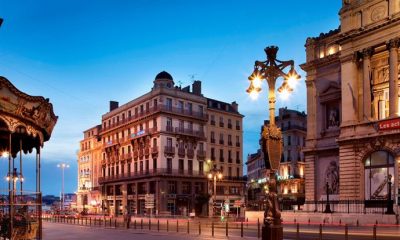
 France6 years ago
France6 years agoEscale Oceania Marseille Vieux Port
-
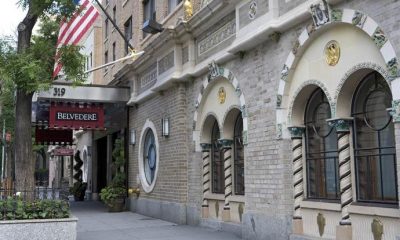
 USA6 years ago
USA6 years agoThe Belvedere
-

 United Kingdom6 years ago
United Kingdom6 years agoBest Western London Peckham Hotel
-

 France6 years ago
France6 years agoAdonis Marseille Vieux Port
-
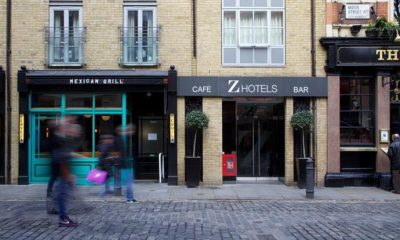
 United Kingdom6 years ago
United Kingdom6 years agoThe Z Hotel Soho






